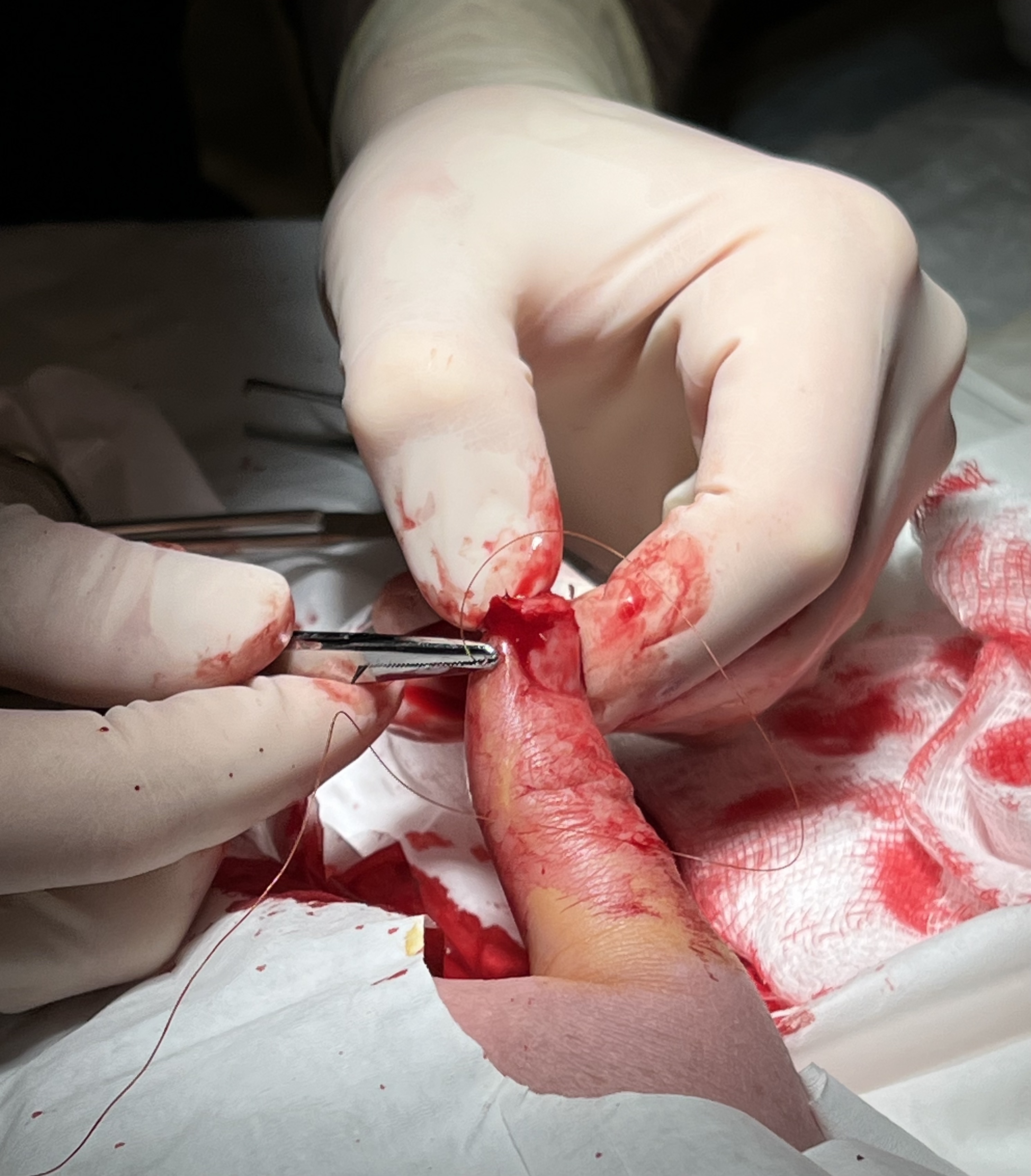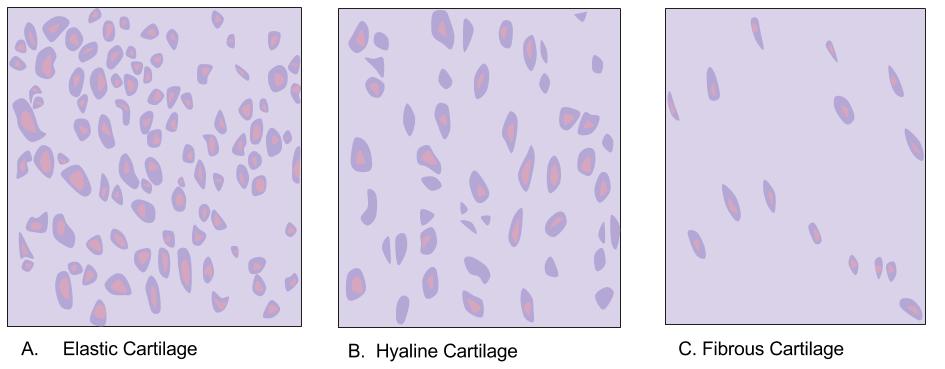|
Mustardé Technique
The Mustardé technique is an otoplastic surgery (otoplasty) for pinning protruding ears. The method belongs together with the Stenström and Converse methods to the traditional otoplasties. It is antihelix plastic surgery performed with the suturing technique. History The technique of this surgery was first described by Mustardé in 1960. Further publications by him appeared in 1963 and 1967. Surgical procedure The Mustardé technique involves making a long incision on the back of the ear and removing a strip of skin. The skin is dissected from the cartilage between he edge of the ear (''helix'') and the place where the ear is attached to the head ('' sulcus posterior''), thus exposing the cartilage on the back of the ear. It is therefore assigned to the open ear pinning methods. The antihelix fold is bent more strongly or formed anew with mattress sutures that are anchored in the cartilage. The cartilage is left completely intact, that is, it is not scored, cut or excised as ... [...More Info...] [...Related Items...] OR: [Wikipedia] [Google] [Baidu] |
Otoplasty
Otoplasty ( el, Wikt:οὖς, οὖς, , "ear" + , , "to shape") denotes the plastic surgery, surgical and non-surgical procedures for correcting the deformities and defects of the Pinna (anatomy), pinna (Ear, external ear), and for reconstructing a defective, or deformed, or absent external ear, consequent to congenital defect, congenital conditions (e.g. microtia, anotia, etc.) and Trauma (medicine), trauma (blunt trauma, blunt, penetrating trauma, penetrating, or blast injury, blast). The otoplastic surgeon corrects the defect or deformity by creating an external ear that is of natural proportions, contour, and appearance, usually achieved by the reshaping, the moving, and the augmenting of the cartilage, cartilaginous support framework of the pinna. Moreover, the occurrence of congenital ear deformities occasionally overlaps with other medical conditions (e.g. Treacher Collins syndrome and hemifacial microsomia). History Antiquity Otoplasty (surgery of the ear) was developed in ... [...More Info...] [...Related Items...] OR: [Wikipedia] [Google] [Baidu] |
Stenström (otoplasty)
Stenström is a Swedish surname. Notable people with the surname include: * Anna-Brita Stenström (born 1932), Swedish academic linguist *Filip Stenström (born 1991), Swedish footballer *Johan Stenström Johan Gunnar Stenström (born 23 August 1951) is a Swedish literary scholar. He works at Lund University as docent (since 2002) and as professor (since 2009). Stenström grew up in Helsingborg. He studied at Malmö Academy of Music and later ... (born 1951), Swedish literary scholar * Oscar Stenström (1978–2015), Finnish cyclist * Thomas Stenström (born 1988), Swedish singer {{DEFAULTSORT:Stenstrom Swedish-language surnames ... [...More Info...] [...Related Items...] OR: [Wikipedia] [Google] [Baidu] |
Converse (otoplasty)
The Converse technique, together with the Mustardé technique and Stenström technique, belongs to the standard methods of traditional otoplasty Otoplasty ( el, Wikt:οὖς, οὖς, , "ear" + , , "to shape") denotes the plastic surgery, surgical and non-surgical procedures for correcting the deformities and defects of the Pinna (anatomy), pinna (Ear, external ear), and for reconstructing a .... Numerous variations for pinning ears have been derived from them. History Converse described his method in 1955J. M. CONVERSE, A. NIGRO, F. A. WILSON, N. JOHNSON: ''A technique for surgical correction of lop ears.'' In: ''Plastic and Reconstructive Surgery (1946).'' Band 15, Nummer 5, Mai 1955, S. 411–418, . and 1963.J. M. CONVERSE: ''CONSTRUCTION OF THE AURICLE IN CONGENITAL MICROTIA.'' In: ''Plastic and Reconstructive Surgery.'' Band 32, Oktober 1963, S. 425–438, . Surgical procedure This antihelix plastic surgery is performed with the incision-suture technique. A long in ... [...More Info...] [...Related Items...] OR: [Wikipedia] [Google] [Baidu] |
Antihelix
The antihelix (anthelix) is a part of the visible ear; the pinna (anatomy), pinna. The antihelix is a curved prominence of cartilage parallel with and in front of the Helix (ear), helix on the pinna. The antihelix divides above into two ''legs'' or crura; the ''crura antihelicis'', between which is a triangular depression, the ''fossa triangularis''. Additional images File:Gray906.png, The Auricular muscles, muscles of the auricula. File:Earcov.JPG, Left human ear File:Slide2COR.JPG, External ear. Right auricle. Lateral view. File:Slide3COR.JPG, External ear. Right auricle. Lateral view. File:Slide4COR.JPG, External ear. Right auricle. Lateral view. External links * () (#5) Auditory system {{anatomy-stub ... [...More Info...] [...Related Items...] OR: [Wikipedia] [Google] [Baidu] |
Suturing
A surgical suture, also known as a stitch or stitches, is a medical device used to hold body tissues together and approximate wound edges after an injury or surgery. Application generally involves using a needle with an attached length of thread. There are numerous types of suture which differ by needle shape and size as well as thread material and characteristics. Selection of surgical suture should be determined by the characteristics and location of the wound or the specific body tissues being approximated. In selecting the needle, thread, and suturing technique to use for a specific patient, a medical care provider must consider the tensile strength of the specific suture thread needed to efficiently hold the tissues together depending on the mechanical and shear forces acting on the wound as well as the thickness of the tissue being approximated. One must also consider the elasticity of the thread and ability to adapt to different tissues, as well as the memory of the thread ... [...More Info...] [...Related Items...] OR: [Wikipedia] [Google] [Baidu] |
Cartilage
Cartilage is a resilient and smooth type of connective tissue. In tetrapods, it covers and protects the ends of long bones at the joints as articular cartilage, and is a structural component of many body parts including the rib cage, the neck and the bronchial tubes, and the intervertebral discs. In other taxa, such as chondrichthyans, but also in cyclostomes, it may constitute a much greater proportion of the skeleton. It is not as hard and rigid as bone, but it is much stiffer and much less flexible than muscle. The matrix of cartilage is made up of glycosaminoglycans, proteoglycans, collagen fibers and, sometimes, elastin. Because of its rigidity, cartilage often serves the purpose of holding tubes open in the body. Examples include the rings of the trachea, such as the cricoid cartilage and carina. Cartilage is composed of specialized cells called chondrocytes that produce a large amount of collagenous extracellular matrix, abundant ground substance that is rich in p ... [...More Info...] [...Related Items...] OR: [Wikipedia] [Google] [Baidu] |
Helix (ear)
The helix is the prominent rim of the auricle. Where the helix turns downwards posteriorly, a small tubercle is sometimes seen, namely the '' auricular tubercle of Darwin''. Additional images File:Gray906.png, The muscles of the auricula. File:Darwin-s-tubercle.jpg, Left: Darwin's tubercle. Right: the homologous point in a macaque The macaques () constitute a genus (''Macaca'') of gregarious Old World monkeys of the subfamily Cercopithecinae. The 23 species of macaques inhabit ranges throughout Asia, North Africa, and (in one instance) Gibraltar. Macaques are principal .... File:Slide2COR.JPG, External ear. Right auricle.Lateral view. File:Slide3COR.JPG, External ear. Right auricle.Lateral view. File:Slide4COR.JPG, External ear. Right auricle.Lateral view. See also References Ear {{anatomy-stub ... [...More Info...] [...Related Items...] OR: [Wikipedia] [Google] [Baidu] |
Sulcus Posterior
{{disambiguation ...
''Sulcus'' (plural ''sulci'') may refer to: * Gingival sulcus, the space between a tooth and surrounding tissue * Sulcus (morphology), a groove, crevice or furrow in medicine, botany, and zoology * Sulcus (neuroanatomy), a crevice on the surface of the brain * Sulcus (geology), a long parallel groove on a planet or a moon * Coronal sulcus, the groove under the corona of the Glans penis * In botany, sulci in seeds or pollen grains are colpi See also * Sulci, an ancient town in southwest Sardinia notable for the Battle of Sulci in 258 BC * Sulcalization, a term in phonetics and phonology * Gyrification Gyrification is the process of forming the characteristic folds of the cerebral cortex. The peak of such a fold is called a '' gyrus'' (pl. ''gyri''), and its trough is called a '' sulcus'' (pl. ''sulci''). The neurons of the cerebral cortex r ... [...More Info...] [...Related Items...] OR: [Wikipedia] [Google] [Baidu] |
Stitch Method
The Merck stitch method is a minimally invasive procedure for pinning protruding ears, developed by Merck.Merck, W.H. (2013). "Dr Merck’s stitch method. A closed minimally invasive procedure for correction of protruding ears (Die Fadenmethode nach Dr. Merck. Ein geschlossenes, minimal-invasives Verfahren zur Anlegung abstehender Ohren)." ''J Aesthet Chir'', 6, 209-220. The method belongs to the special types of ear pinning surgeries. In contrast to other variations of minimally invasive proceduresTramier, H. ''Personal approach to treatment of prominent ears.'' In: ''Plastic and Reconstructive Surgery.'' 99, Number 2,, 562–565, .Vecchione, T.R. 1979 ''Needle scoring of the anterior surface of the cartilage in otoplasty.'' In: ''Plastic and Reconstructive Surgery.'' 64, Number 4, 568, . the stitch method does not use additional techniques from the traditional ear pinning surgeries (otoplasty). It belongs to the closed ear pinning surgeries because the ear is not cu ... [...More Info...] [...Related Items...] OR: [Wikipedia] [Google] [Baidu] |
Hypertrophic
Hypertrophy is the increase in the volume of an organ or tissue due to the enlargement of its component cells. It is distinguished from hyperplasia, in which the cells remain approximately the same size but increase in number.Updated by Linda J. Vorvick. 8/14/1Hyperplasia/ref> Although hypertrophy and hyperplasia are two distinct processes, they frequently occur together, such as in the case of the hormonally-induced proliferation and enlargement of the cells of the uterus during pregnancy. Eccentric hypertrophy is a type of hypertrophy where the walls and chamber of a hollow organ undergo growth in which the overall size and volume are enlarged. It is applied especially to the left ventricle of heart. Sarcomeres are added in series, as for example in dilated cardiomyopathy (in contrast to hypertrophic cardiomyopathy, a type of concentric hypertrophy, where sarcomeres are added in parallel). Gallery File:*+ * Photographic documentation on sexual education - Hypertrophy of br ... [...More Info...] [...Related Items...] OR: [Wikipedia] [Google] [Baidu] |
Keloid
Keloid, also known as keloid disorder and keloidal scar, is the formation of a type of scar which, depending on its maturity, is composed mainly of either type III (early) or type I (late) collagen. It is a result of an overgrowth of granulation tissue (collagen type 3) at the site of a healed skin injury which is then slowly replaced by collagen type 1. Keloids are firm, rubbery lesions or shiny, fibrous nodules, and can vary from pink to the color of the person's skin or red to dark brown in color. A keloid scar is benign and not contagious, but sometimes accompanied by severe itchiness, pain, and changes in texture. In severe cases, it can affect movement of skin. In the United States keloid scars are seen 15 times more frequently in people of sub-Saharan African descent than in people of European descent. There is a higher tendency to develop a keloid among those with a family history of keloids and people between the ages of 10 and 30 years. Keloids should not be confused w ... [...More Info...] [...Related Items...] OR: [Wikipedia] [Google] [Baidu] |
Necrosis
Necrosis () is a form of cell injury which results in the premature death of cells in living tissue by autolysis. Necrosis is caused by factors external to the cell or tissue, such as infection, or trauma which result in the unregulated digestion of cell components. In contrast, apoptosis is a naturally occurring programmed and targeted cause of cellular death. While apoptosis often provides beneficial effects to the organism, necrosis is almost always detrimental and can be fatal. Cellular death due to necrosis does not follow the apoptotic signal transduction pathway, but rather various receptors are activated and result in the loss of cell membrane integrity and an uncontrolled release of products of cell death into the extracellular space. This initiates in the surrounding tissue an inflammatory response, which attracts leukocytes and nearby phagocytes which eliminate the dead cells by phagocytosis. However, microbial damaging substances released by leukocytes woul ... [...More Info...] [...Related Items...] OR: [Wikipedia] [Google] [Baidu] |




